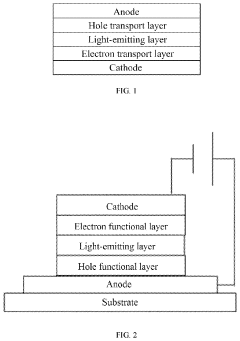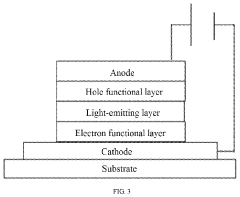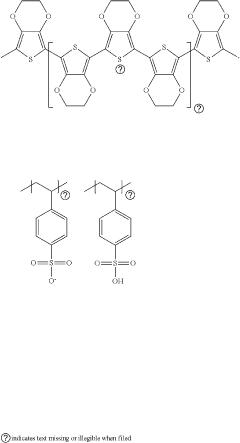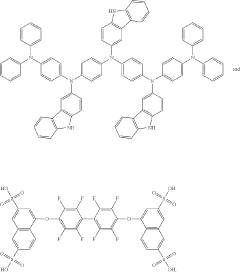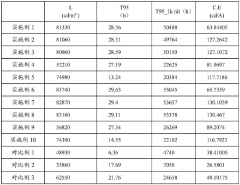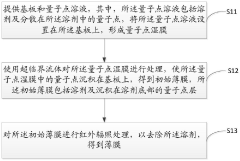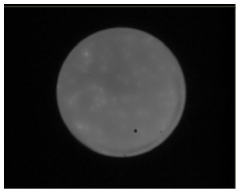How to Adapt QLED to Fit Emerging Market Needs?
JUN 19, 20259 MIN READ
Generate Your Research Report Instantly with AI Agent
Patsnap Eureka helps you evaluate technical feasibility & market potential.
QLED Evolution and Objectives
Quantum Dot Light-Emitting Diode (QLED) technology has emerged as a revolutionary advancement in display technology, offering superior color performance and energy efficiency compared to traditional LED displays. The evolution of QLED technology can be traced back to the early 2000s when researchers first began exploring the potential of quantum dots in display applications. Since then, QLED has undergone significant improvements in terms of color accuracy, brightness, and longevity.
The primary objective of QLED technology is to provide an enhanced visual experience while addressing the limitations of existing display technologies. As the demand for high-quality displays continues to grow in emerging markets, adapting QLED to meet these needs has become a crucial focus for manufacturers and researchers alike.
One of the key evolutionary milestones in QLED technology was the development of cadmium-free quantum dots, which addressed environmental concerns and regulatory requirements. This breakthrough has paved the way for wider adoption of QLED in consumer electronics and emerging markets where environmental regulations are becoming increasingly stringent.
Another significant development in QLED evolution has been the improvement in quantum dot stability and efficiency. Early QLED displays suffered from rapid degradation of quantum dots, limiting their lifespan and commercial viability. However, recent advancements in quantum dot synthesis and encapsulation techniques have greatly enhanced the durability and performance of QLED displays, making them more suitable for a variety of applications in emerging markets.
The objectives for adapting QLED to fit emerging market needs are multifaceted. Firstly, there is a focus on cost reduction to make QLED technology more accessible to price-sensitive markets. This involves optimizing manufacturing processes and exploring alternative materials that can deliver similar performance at a lower cost.
Secondly, there is an emphasis on improving the energy efficiency of QLED displays to address the growing concern for sustainability and reduced power consumption in emerging markets. This aligns with the global trend towards energy-efficient technologies and can provide a competitive edge in markets where energy costs are a significant factor.
Thirdly, researchers and manufacturers are working on enhancing the flexibility and durability of QLED displays to meet the diverse needs of emerging markets. This includes developing QLED technology for flexible and foldable displays, as well as improving resistance to environmental factors such as humidity and temperature fluctuations, which are common challenges in many emerging market regions.
Lastly, there is a growing focus on integrating QLED technology with other emerging technologies such as 5G, Internet of Things (IoT), and artificial intelligence. This integration aims to create smart display solutions that can cater to the evolving technological landscape of emerging markets, providing not just superior visual quality but also enhanced connectivity and interactivity.
The primary objective of QLED technology is to provide an enhanced visual experience while addressing the limitations of existing display technologies. As the demand for high-quality displays continues to grow in emerging markets, adapting QLED to meet these needs has become a crucial focus for manufacturers and researchers alike.
One of the key evolutionary milestones in QLED technology was the development of cadmium-free quantum dots, which addressed environmental concerns and regulatory requirements. This breakthrough has paved the way for wider adoption of QLED in consumer electronics and emerging markets where environmental regulations are becoming increasingly stringent.
Another significant development in QLED evolution has been the improvement in quantum dot stability and efficiency. Early QLED displays suffered from rapid degradation of quantum dots, limiting their lifespan and commercial viability. However, recent advancements in quantum dot synthesis and encapsulation techniques have greatly enhanced the durability and performance of QLED displays, making them more suitable for a variety of applications in emerging markets.
The objectives for adapting QLED to fit emerging market needs are multifaceted. Firstly, there is a focus on cost reduction to make QLED technology more accessible to price-sensitive markets. This involves optimizing manufacturing processes and exploring alternative materials that can deliver similar performance at a lower cost.
Secondly, there is an emphasis on improving the energy efficiency of QLED displays to address the growing concern for sustainability and reduced power consumption in emerging markets. This aligns with the global trend towards energy-efficient technologies and can provide a competitive edge in markets where energy costs are a significant factor.
Thirdly, researchers and manufacturers are working on enhancing the flexibility and durability of QLED displays to meet the diverse needs of emerging markets. This includes developing QLED technology for flexible and foldable displays, as well as improving resistance to environmental factors such as humidity and temperature fluctuations, which are common challenges in many emerging market regions.
Lastly, there is a growing focus on integrating QLED technology with other emerging technologies such as 5G, Internet of Things (IoT), and artificial intelligence. This integration aims to create smart display solutions that can cater to the evolving technological landscape of emerging markets, providing not just superior visual quality but also enhanced connectivity and interactivity.
Emerging Market QLED Demand Analysis
The emerging market demand for QLED (Quantum Dot Light-Emitting Diode) technology is experiencing significant growth, driven by several key factors. As consumers in these markets become more affluent and tech-savvy, there is an increasing appetite for high-quality display technologies that offer superior color performance and energy efficiency.
In countries like China, India, and Brazil, the rising middle class is fueling demand for premium television sets and other display devices. QLED technology, with its ability to deliver vibrant colors and deep blacks, is particularly appealing to consumers who prioritize image quality. The technology's energy efficiency is also a crucial selling point in markets where electricity costs are a concern.
The smartphone market in emerging economies is another significant driver of QLED demand. As mobile devices become the primary means of content consumption for many users, there is a growing need for displays that can deliver high-quality visuals while conserving battery life. QLED's ability to meet these requirements positions it well in this segment.
The automotive industry in emerging markets is also showing interest in QLED technology for in-vehicle displays. As car manufacturers in countries like China and India focus on producing more technologically advanced vehicles, the demand for high-quality, durable display solutions is increasing.
However, the adoption of QLED technology in emerging markets faces some challenges. Price sensitivity remains a significant factor, as QLED displays are generally more expensive than traditional LED or LCD options. Manufacturers need to find ways to reduce production costs to make QLED more accessible to a broader range of consumers in these markets.
Additionally, there is a need for localization of QLED products to meet specific market preferences. This includes adapting screen sizes, design aesthetics, and smart features to align with local tastes and usage patterns. For example, in some emerging markets, there may be a preference for larger screen sizes in televisions, while in others, compact and multifunctional displays might be more popular.
The education and healthcare sectors in emerging markets also present opportunities for QLED technology. As these sectors modernize, there is a growing demand for high-quality displays for interactive learning environments and medical imaging applications. QLED's color accuracy and brightness make it well-suited for these specialized use cases.
To capitalize on the emerging market demand, QLED manufacturers need to focus on developing cost-effective production methods, creating region-specific product lines, and establishing strong distribution networks. Collaborations with local technology companies and content providers could also help in creating ecosystem-wide solutions that drive QLED adoption.
In countries like China, India, and Brazil, the rising middle class is fueling demand for premium television sets and other display devices. QLED technology, with its ability to deliver vibrant colors and deep blacks, is particularly appealing to consumers who prioritize image quality. The technology's energy efficiency is also a crucial selling point in markets where electricity costs are a concern.
The smartphone market in emerging economies is another significant driver of QLED demand. As mobile devices become the primary means of content consumption for many users, there is a growing need for displays that can deliver high-quality visuals while conserving battery life. QLED's ability to meet these requirements positions it well in this segment.
The automotive industry in emerging markets is also showing interest in QLED technology for in-vehicle displays. As car manufacturers in countries like China and India focus on producing more technologically advanced vehicles, the demand for high-quality, durable display solutions is increasing.
However, the adoption of QLED technology in emerging markets faces some challenges. Price sensitivity remains a significant factor, as QLED displays are generally more expensive than traditional LED or LCD options. Manufacturers need to find ways to reduce production costs to make QLED more accessible to a broader range of consumers in these markets.
Additionally, there is a need for localization of QLED products to meet specific market preferences. This includes adapting screen sizes, design aesthetics, and smart features to align with local tastes and usage patterns. For example, in some emerging markets, there may be a preference for larger screen sizes in televisions, while in others, compact and multifunctional displays might be more popular.
The education and healthcare sectors in emerging markets also present opportunities for QLED technology. As these sectors modernize, there is a growing demand for high-quality displays for interactive learning environments and medical imaging applications. QLED's color accuracy and brightness make it well-suited for these specialized use cases.
To capitalize on the emerging market demand, QLED manufacturers need to focus on developing cost-effective production methods, creating region-specific product lines, and establishing strong distribution networks. Collaborations with local technology companies and content providers could also help in creating ecosystem-wide solutions that drive QLED adoption.
QLED Technological Challenges
QLED technology, while promising, faces several significant challenges that need to be addressed to meet emerging market needs. One of the primary obstacles is the stability and longevity of quantum dots. These nanocrystals are prone to degradation when exposed to air, moisture, and high temperatures, which can lead to a decrease in display performance over time. This issue is particularly critical in emerging markets where environmental conditions may be more varied and extreme.
Another major challenge lies in the manufacturing process of QLED displays. The current methods for depositing quantum dots onto substrates are complex and costly, making it difficult to scale up production to meet the demands of emerging markets. The precision required in the deposition process also contributes to higher production costs, which can be a significant barrier to adoption in price-sensitive markets.
Color accuracy and consistency present another set of challenges for QLED technology. While QLEDs offer a wider color gamut than traditional LED displays, achieving precise color control across different batches and maintaining color uniformity over the entire display area remains challenging. This is crucial for emerging markets where consumers are increasingly demanding high-quality visual experiences across various applications, from smartphones to large-format displays.
Energy efficiency is another area where QLED technology needs improvement to better suit emerging market needs. Although QLEDs are more energy-efficient than some other display technologies, there is still room for enhancement, especially in markets where power consumption is a critical factor due to limited or unreliable energy infrastructure.
The issue of blue light emission is also a concern that needs to be addressed. QLED displays, like many other display technologies, emit blue light that can cause eye strain and disrupt sleep patterns. Developing solutions to mitigate blue light emission without compromising display quality is essential for adapting QLED technology to health-conscious consumers in emerging markets.
Lastly, the environmental impact of QLED production and disposal poses challenges that need to be overcome. The use of heavy metals in quantum dots raises concerns about toxicity and environmental contamination. Developing more eco-friendly quantum dot materials and establishing effective recycling processes are crucial steps in making QLED technology more sustainable and acceptable in environmentally conscious emerging markets.
Another major challenge lies in the manufacturing process of QLED displays. The current methods for depositing quantum dots onto substrates are complex and costly, making it difficult to scale up production to meet the demands of emerging markets. The precision required in the deposition process also contributes to higher production costs, which can be a significant barrier to adoption in price-sensitive markets.
Color accuracy and consistency present another set of challenges for QLED technology. While QLEDs offer a wider color gamut than traditional LED displays, achieving precise color control across different batches and maintaining color uniformity over the entire display area remains challenging. This is crucial for emerging markets where consumers are increasingly demanding high-quality visual experiences across various applications, from smartphones to large-format displays.
Energy efficiency is another area where QLED technology needs improvement to better suit emerging market needs. Although QLEDs are more energy-efficient than some other display technologies, there is still room for enhancement, especially in markets where power consumption is a critical factor due to limited or unreliable energy infrastructure.
The issue of blue light emission is also a concern that needs to be addressed. QLED displays, like many other display technologies, emit blue light that can cause eye strain and disrupt sleep patterns. Developing solutions to mitigate blue light emission without compromising display quality is essential for adapting QLED technology to health-conscious consumers in emerging markets.
Lastly, the environmental impact of QLED production and disposal poses challenges that need to be overcome. The use of heavy metals in quantum dots raises concerns about toxicity and environmental contamination. Developing more eco-friendly quantum dot materials and establishing effective recycling processes are crucial steps in making QLED technology more sustainable and acceptable in environmentally conscious emerging markets.
Current QLED Adaptation Strategies
01 QLED structure and composition
QLED (Quantum Dot Light Emitting Diode) technology involves the use of quantum dots as light-emitting materials. The structure typically includes layers of quantum dots sandwiched between electron and hole transport layers. The composition and arrangement of these layers are crucial for optimizing the device's performance, efficiency, and color purity.- QLED structure and composition: QLED (Quantum Dot Light Emitting Diode) technology involves the use of quantum dots as light-emitting materials. The structure typically includes layers of quantum dots sandwiched between electron and hole transport layers. The composition and arrangement of these layers are crucial for optimizing the device's performance, efficiency, and color purity.
- Quantum dot synthesis and modification: The synthesis and modification of quantum dots play a vital role in QLED performance. This includes developing methods to control the size, shape, and surface properties of quantum dots, as well as incorporating additives or shell structures to enhance stability and efficiency. Techniques for improving quantum yield and reducing defects are also crucial in this area.
- QLED manufacturing processes: Advancements in QLED manufacturing processes focus on improving scalability, yield, and cost-effectiveness. This includes developing novel deposition techniques for quantum dot layers, optimizing patterning methods for display applications, and enhancing encapsulation processes to protect the sensitive quantum dot materials from environmental factors.
- Color tuning and light management in QLEDs: Techniques for precise color tuning and light management are essential for QLED technology. This involves optimizing the emission spectra of quantum dots, developing color conversion layers, and implementing optical structures to enhance light extraction efficiency. Methods for achieving wide color gamut and high color purity are also key focus areas.
- QLED device integration and applications: Integration of QLED technology into various devices and applications is a growing area of research. This includes developing QLED-based displays, lighting solutions, and sensors. Efforts are focused on improving device architectures, addressing challenges in large-area applications, and exploring new use cases such as flexible or transparent QLEDs.
02 Quantum dot synthesis and modification
The synthesis and modification of quantum dots play a vital role in QLED performance. This includes developing methods to control the size, shape, and surface properties of quantum dots, as well as incorporating additives or shell structures to enhance stability and efficiency. Techniques for improving quantum yield and reducing defects are also crucial in this area.Expand Specific Solutions03 QLED device fabrication techniques
Various fabrication techniques are employed in QLED manufacturing, including solution processing, inkjet printing, and vacuum deposition methods. These techniques aim to improve the uniformity of quantum dot layers, enhance device stability, and increase production efficiency. Novel approaches to patterning and encapsulation are also explored to optimize device performance and longevity.Expand Specific Solutions04 Color tuning and light management in QLEDs
Achieving precise color control and optimizing light extraction are critical aspects of QLED technology. This involves developing strategies for tuning the emission wavelength of quantum dots, implementing color conversion layers, and designing optical structures to enhance light outcoupling efficiency. Advanced color management techniques are explored to improve color gamut and display quality.Expand Specific Solutions05 QLED integration and application
The integration of QLED technology into various applications is an active area of research and development. This includes incorporating QLEDs into flexible and transparent displays, developing hybrid QLED-OLED systems, and exploring novel applications such as lighting, sensors, and photovoltaics. Efforts are also made to improve the compatibility of QLED technology with existing manufacturing processes and display architectures.Expand Specific Solutions
QLED Industry Leaders
The QLED market is in a growth phase, with increasing demand for high-quality displays in emerging markets. The market size is expanding rapidly, driven by consumer electronics and smart home applications. Technologically, QLED is maturing, with companies like BOE Technology Group, TCL China Star Optoelectronics, and Sharp Corp. leading innovation. These firms are focusing on adapting QLED technology to meet specific emerging market needs, such as improved energy efficiency, durability, and cost-effectiveness. Research institutions like The Hong Kong University of Science & Technology and South China Normal University are contributing to advancements in QLED materials and manufacturing processes, further accelerating the technology's adaptation to diverse market requirements.
BOE Technology Group Co., Ltd.
Technical Solution: BOE has developed a proprietary QLED technology called ART (Advanced Reflective Technology) that enhances color gamut and brightness while reducing power consumption. Their approach involves using a specially designed quantum dot film and advanced light management techniques to improve light extraction efficiency. BOE's QLED panels also incorporate a unique color filter design that helps to minimize color crosstalk and improve overall image quality.
Strengths: Wide color gamut, high brightness, and energy efficiency. Weaknesses: Higher production costs compared to traditional LCD technology.
Shenzhen China Star Optoelectronics Semicon Display Tech Co.
Technical Solution: China Star Optoelectronics has developed a QLED technology that focuses on improving color accuracy and expanding the color gamut. Their approach involves using high-purity quantum dots and a proprietary color conversion layer to achieve more precise color reproduction. They have also implemented advanced thermal management techniques to enhance the longevity and stability of their QLED displays, addressing one of the key challenges in QLED technology.
Strengths: Excellent color accuracy and expanded color gamut. Weaknesses: Potential issues with long-term stability of quantum dots.
Key QLED Innovations
Optoelectronic device
PatentPendingUS20240107791A1
Innovation
- An optoelectronic device with a quantum dot light-emitting layer in a core-shell structure, where the valence band top energy level difference between the shell layer material and the hole transport material is greater than or equal to 0.5 eV, and the electron transport layer comprises zinc oxide nanomaterials bound with amine/carboxyl ligands of 3-8 carbon atoms, optimizing hole and electron injection balance and reducing charge accumulation.
Thin film preparation method, photoelectric device and display device
PatentPendingCN117693274A
Innovation
- The quantum dot wet film is treated with supercritical fluid and combined with infrared irradiation to remove the solvent to form a high-quality film.
QLED Supply Chain Analysis
The QLED supply chain is a complex network of manufacturers, suppliers, and distributors that work together to bring Quantum Dot Light Emitting Diode (QLED) technology to market. This analysis focuses on the key components and players involved in the production and distribution of QLED displays, particularly in the context of emerging markets.
At the core of the QLED supply chain are the quantum dot manufacturers. Companies like Nanosys, Nanoco, and QD Vision are at the forefront of quantum dot production, developing and refining the nanocrystals that give QLED displays their superior color performance. These firms supply their quantum dot materials to panel manufacturers, who integrate them into their display production processes.
Panel manufacturers form the next crucial link in the chain. Major players like Samsung, TCL, and Hisense have invested heavily in QLED technology, incorporating quantum dots into their LCD panels to create QLED displays. These manufacturers often have vertically integrated supply chains, controlling multiple stages of production from component sourcing to final assembly.
Component suppliers play a vital role in the QLED ecosystem. This includes providers of LCD panels, LED backlights, color filters, and other essential parts. Companies like LG Display, AUO, and Innolux are significant suppliers in this segment, often serving multiple QLED manufacturers.
The distribution network for QLED displays varies depending on the target market. In established markets, traditional retail channels and e-commerce platforms are primary distribution methods. However, in emerging markets, the supply chain often involves local partnerships, specialized distributors, and sometimes government-backed initiatives to promote technology adoption.
Adapting the QLED supply chain to emerging markets presents unique challenges and opportunities. Local manufacturing partnerships can help reduce costs and overcome import barriers. For instance, Samsung has established manufacturing facilities in countries like India and Vietnam to serve these growing markets more effectively.
To meet emerging market needs, the QLED supply chain must focus on cost optimization without compromising quality. This may involve developing more affordable QLED variants, streamlining production processes, and leveraging local resources. Additionally, the supply chain must be flexible enough to adapt to varying regulatory environments and consumer preferences in different emerging markets.
At the core of the QLED supply chain are the quantum dot manufacturers. Companies like Nanosys, Nanoco, and QD Vision are at the forefront of quantum dot production, developing and refining the nanocrystals that give QLED displays their superior color performance. These firms supply their quantum dot materials to panel manufacturers, who integrate them into their display production processes.
Panel manufacturers form the next crucial link in the chain. Major players like Samsung, TCL, and Hisense have invested heavily in QLED technology, incorporating quantum dots into their LCD panels to create QLED displays. These manufacturers often have vertically integrated supply chains, controlling multiple stages of production from component sourcing to final assembly.
Component suppliers play a vital role in the QLED ecosystem. This includes providers of LCD panels, LED backlights, color filters, and other essential parts. Companies like LG Display, AUO, and Innolux are significant suppliers in this segment, often serving multiple QLED manufacturers.
The distribution network for QLED displays varies depending on the target market. In established markets, traditional retail channels and e-commerce platforms are primary distribution methods. However, in emerging markets, the supply chain often involves local partnerships, specialized distributors, and sometimes government-backed initiatives to promote technology adoption.
Adapting the QLED supply chain to emerging markets presents unique challenges and opportunities. Local manufacturing partnerships can help reduce costs and overcome import barriers. For instance, Samsung has established manufacturing facilities in countries like India and Vietnam to serve these growing markets more effectively.
To meet emerging market needs, the QLED supply chain must focus on cost optimization without compromising quality. This may involve developing more affordable QLED variants, streamlining production processes, and leveraging local resources. Additionally, the supply chain must be flexible enough to adapt to varying regulatory environments and consumer preferences in different emerging markets.
QLED Environmental Impact
As QLED technology continues to gain traction in the display market, it is crucial to assess its environmental impact, particularly in the context of emerging market needs. QLED displays offer several environmental advantages over traditional LED and OLED technologies, but they also present unique challenges that must be addressed to ensure sustainable adoption.
One of the primary environmental benefits of QLED technology is its improved energy efficiency. QLED displays consume less power compared to conventional LED displays, resulting in reduced energy consumption and lower carbon emissions over the product lifecycle. This aspect is particularly relevant for emerging markets, where energy infrastructure may be less developed, and energy costs can be a significant factor in technology adoption.
The manufacturing process of QLED displays also presents some environmental advantages. Unlike OLED technology, which requires rare earth elements, QLED production relies on more abundant materials, potentially reducing the environmental impact of resource extraction. Additionally, the quantum dot materials used in QLED displays can be synthesized using solution-based processes, which are generally less energy-intensive than traditional semiconductor manufacturing methods.
However, the use of cadmium in some QLED displays raises environmental concerns. While cadmium-based quantum dots offer superior color performance, cadmium is a toxic heavy metal that poses risks to human health and the environment if not properly managed throughout the product lifecycle. To address this issue, manufacturers are developing cadmium-free quantum dot materials, although these alternatives currently lag behind in performance.
The longevity of QLED displays is another factor contributing to their environmental impact. QLED technology generally offers longer lifespans compared to OLED displays, potentially reducing electronic waste generation. However, the complex nature of QLED displays can make them challenging to recycle, necessitating the development of specialized recycling processes to recover valuable materials and minimize environmental harm.
As QLED technology evolves to meet emerging market needs, several environmental considerations must be addressed. These include further improvements in energy efficiency, the development of more sustainable manufacturing processes, and the implementation of effective recycling and disposal methods. Additionally, research into eco-friendly quantum dot materials and encapsulation techniques will be crucial for minimizing the technology's environmental footprint.
In conclusion, while QLED technology offers several environmental advantages, its adaptation to emerging markets must be accompanied by ongoing efforts to mitigate potential negative impacts. By focusing on sustainable innovation and responsible manufacturing practices, QLED technology can position itself as an environmentally conscious choice for display applications in diverse global markets.
One of the primary environmental benefits of QLED technology is its improved energy efficiency. QLED displays consume less power compared to conventional LED displays, resulting in reduced energy consumption and lower carbon emissions over the product lifecycle. This aspect is particularly relevant for emerging markets, where energy infrastructure may be less developed, and energy costs can be a significant factor in technology adoption.
The manufacturing process of QLED displays also presents some environmental advantages. Unlike OLED technology, which requires rare earth elements, QLED production relies on more abundant materials, potentially reducing the environmental impact of resource extraction. Additionally, the quantum dot materials used in QLED displays can be synthesized using solution-based processes, which are generally less energy-intensive than traditional semiconductor manufacturing methods.
However, the use of cadmium in some QLED displays raises environmental concerns. While cadmium-based quantum dots offer superior color performance, cadmium is a toxic heavy metal that poses risks to human health and the environment if not properly managed throughout the product lifecycle. To address this issue, manufacturers are developing cadmium-free quantum dot materials, although these alternatives currently lag behind in performance.
The longevity of QLED displays is another factor contributing to their environmental impact. QLED technology generally offers longer lifespans compared to OLED displays, potentially reducing electronic waste generation. However, the complex nature of QLED displays can make them challenging to recycle, necessitating the development of specialized recycling processes to recover valuable materials and minimize environmental harm.
As QLED technology evolves to meet emerging market needs, several environmental considerations must be addressed. These include further improvements in energy efficiency, the development of more sustainable manufacturing processes, and the implementation of effective recycling and disposal methods. Additionally, research into eco-friendly quantum dot materials and encapsulation techniques will be crucial for minimizing the technology's environmental footprint.
In conclusion, while QLED technology offers several environmental advantages, its adaptation to emerging markets must be accompanied by ongoing efforts to mitigate potential negative impacts. By focusing on sustainable innovation and responsible manufacturing practices, QLED technology can position itself as an environmentally conscious choice for display applications in diverse global markets.
Unlock deeper insights with Patsnap Eureka Quick Research — get a full tech report to explore trends and direct your research. Try now!
Generate Your Research Report Instantly with AI Agent
Supercharge your innovation with Patsnap Eureka AI Agent Platform!
